Power BI Blog: Q&A in Power BI Desktop Revisited - Part 2
3 October 2024
Welcome back to this week’s edition of the Power BI blog series. This week, we look at how to customise Q&A in Power BI Desktop.
Amidst the discussions about how ChatGPT and CoPilot can assist users with Power BI, the Q&A functionality often gets overlooked. We looked at how to use Q&A in Power BI Desktop in Q&A Power BI Desktop back in 2018. The Power BI Desktop interface has gone through many facelifts since then, and it is high time we revisited this technology.
Last week, we looked at how to use the Q&A functionality. When we created a Q&A visual, we noted that the cog icon next to it enables us to change the settings for Q&A:
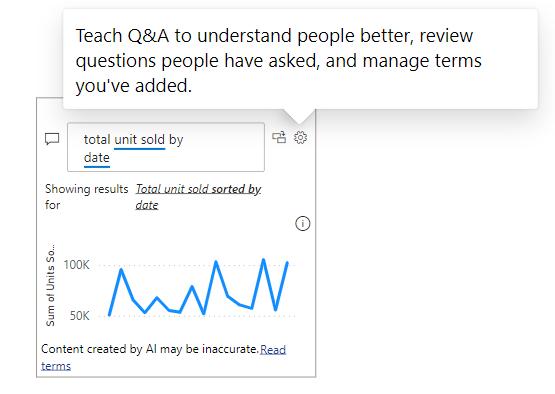
Clicking on this reveals a new dialog:
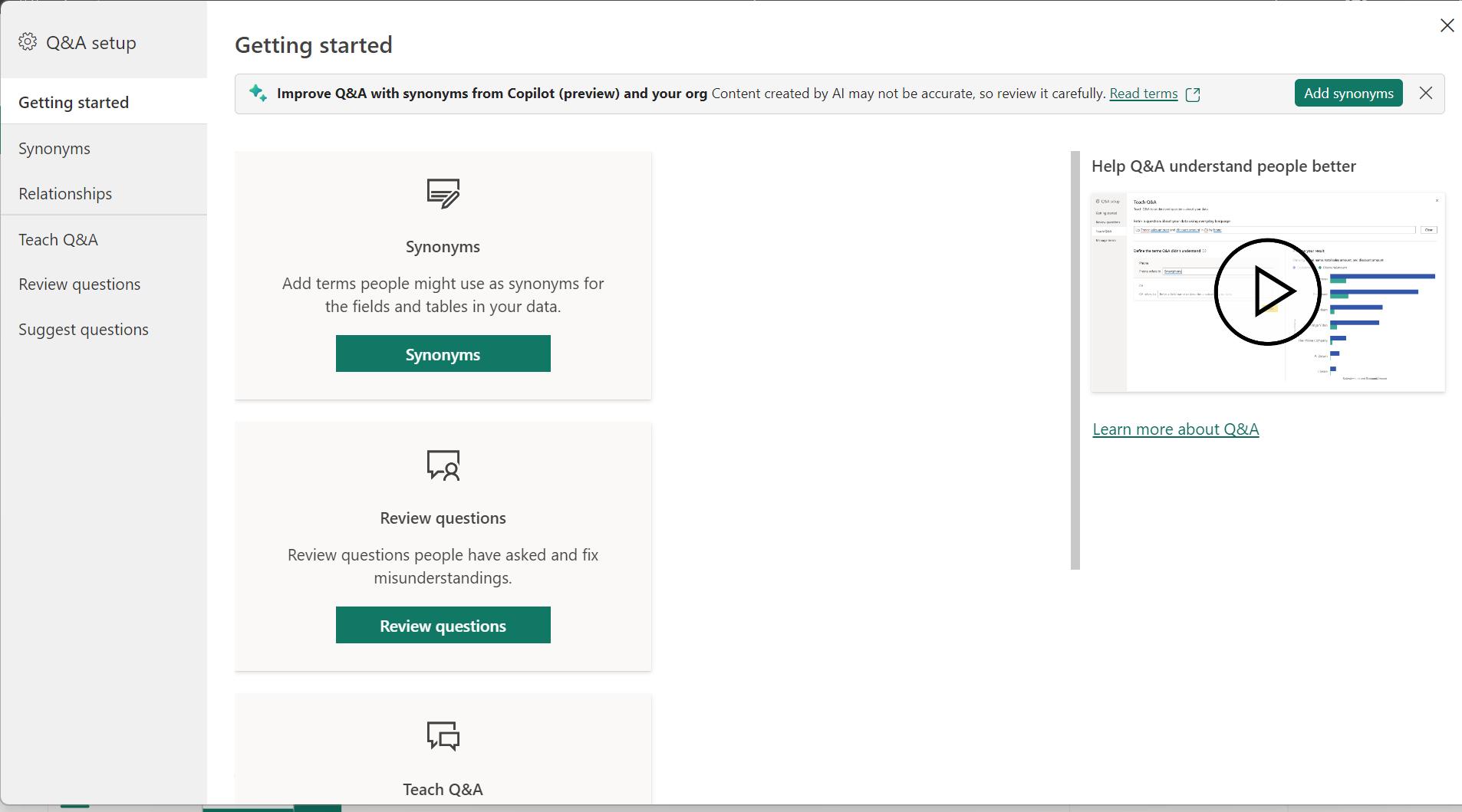
Let’s look at the options here in more detail. The purpose of these settings is to improve the user’s experience of using natural language in Power BI.
We land on the ‘Getting Started’ tab. Here, we can see a description of the other tabs, and a video to explain how to ‘Help Q&A understand people better’. Let’s go through the tabs:
Synonyms
This is where you add terms people might use as synonyms for the fields and tables in your data.
Of course, we can help the process immensely by using natural language to name our fields and tables. ‘Customer Reference Number’ is more likely to be input in a question than ‘CustRefNo’, for instance. Choosing this option reveals a new tab:
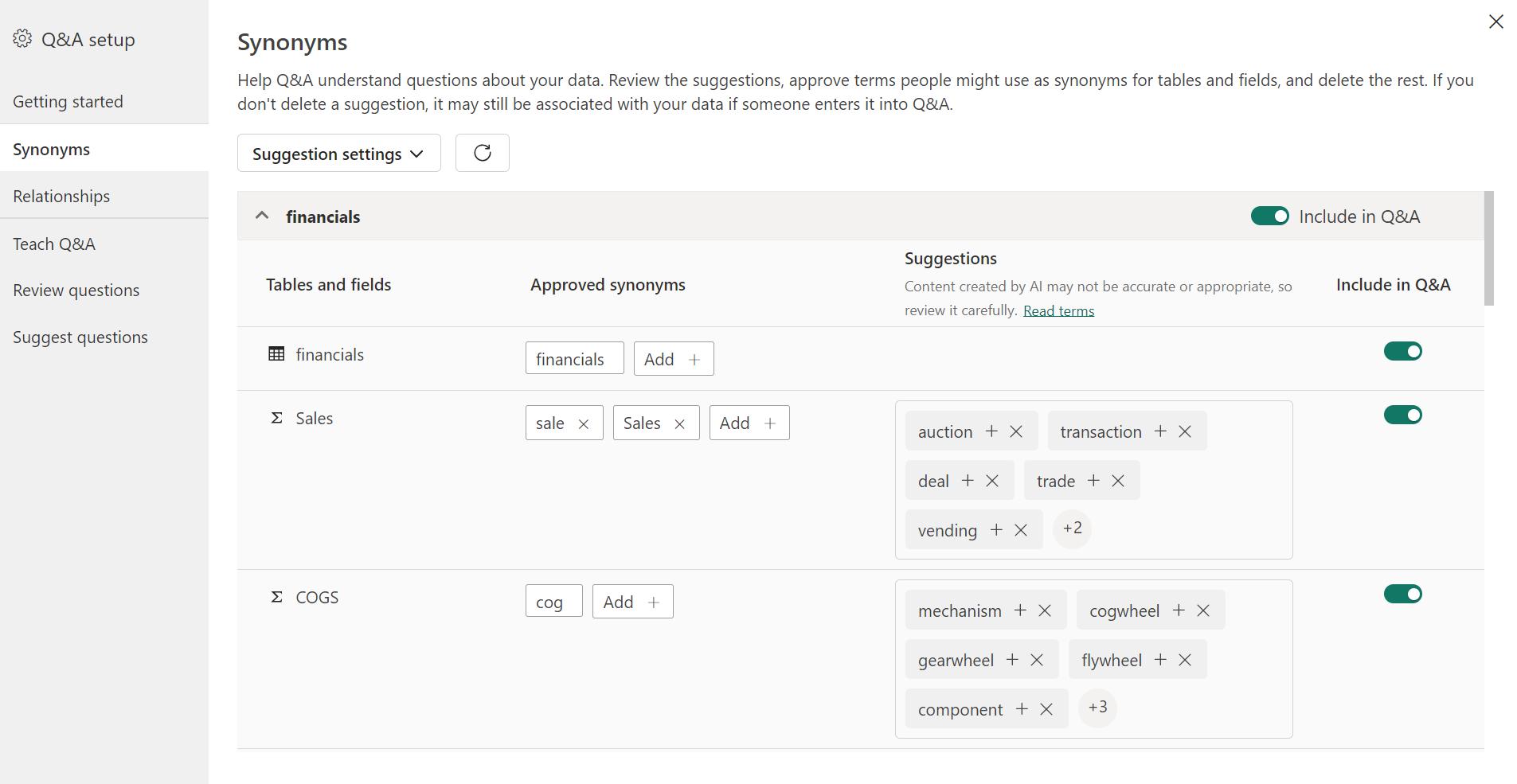
As we can see, the suggestions are not specific to a topic. In our case, COGS (cost of goods sold) is an accounting term, not a wheel in a machine! We may change the settings for suggestions:
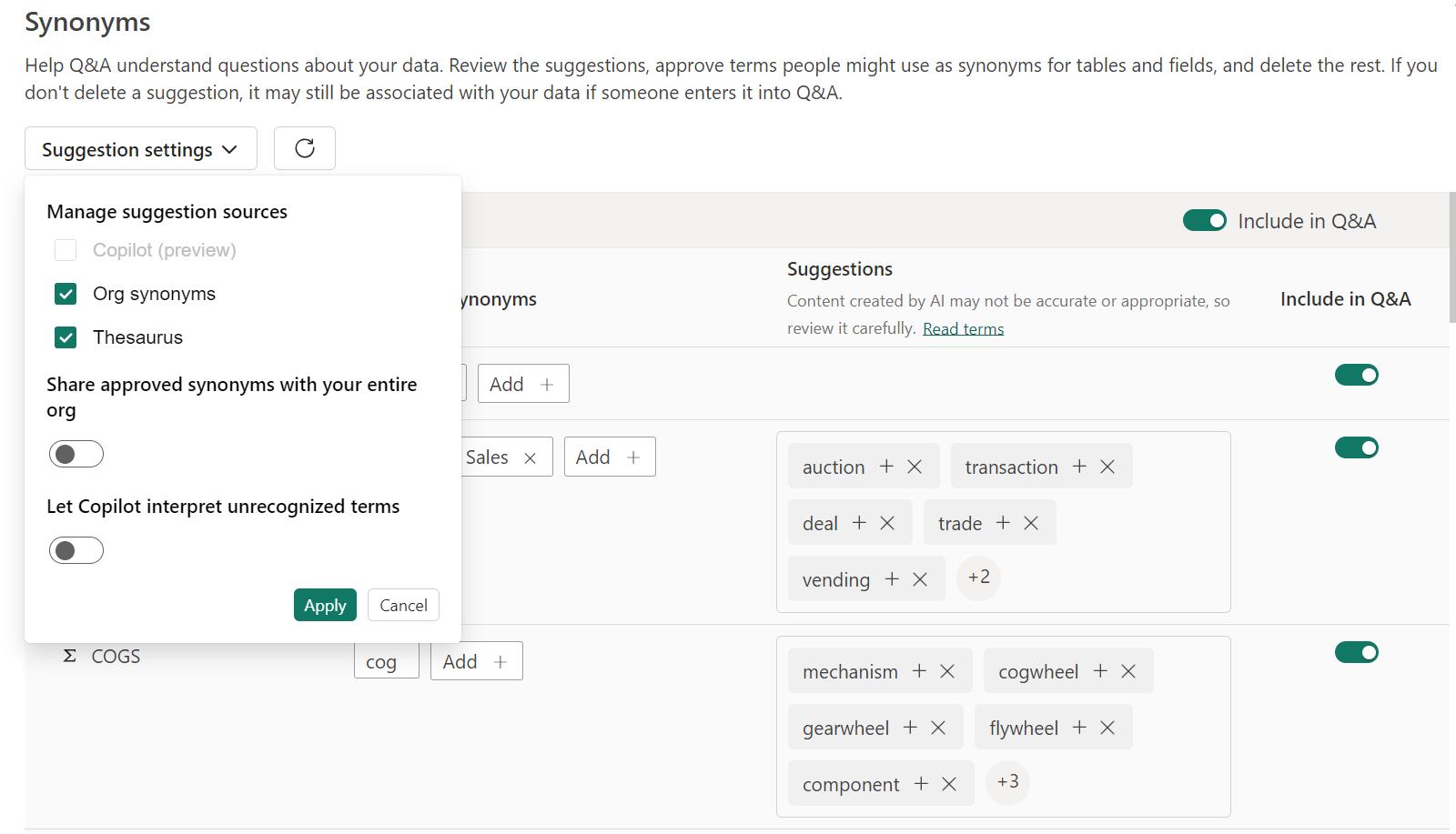
Note that the options to user Copilot are described in the article Ask Copilot questions against your semantic model.
We may choose to switch off some options, or we can remove the selected table from the Q&A settings, meaning that no Q&A could be asked about this table. We may use the ‘Add +’ button to add synonyms for the COGS field:

This will then be recognised in the Q&A:
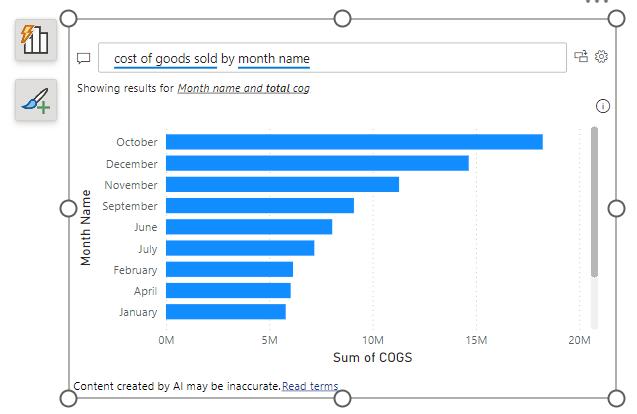
Relationships
Choosing this tab displays the following:
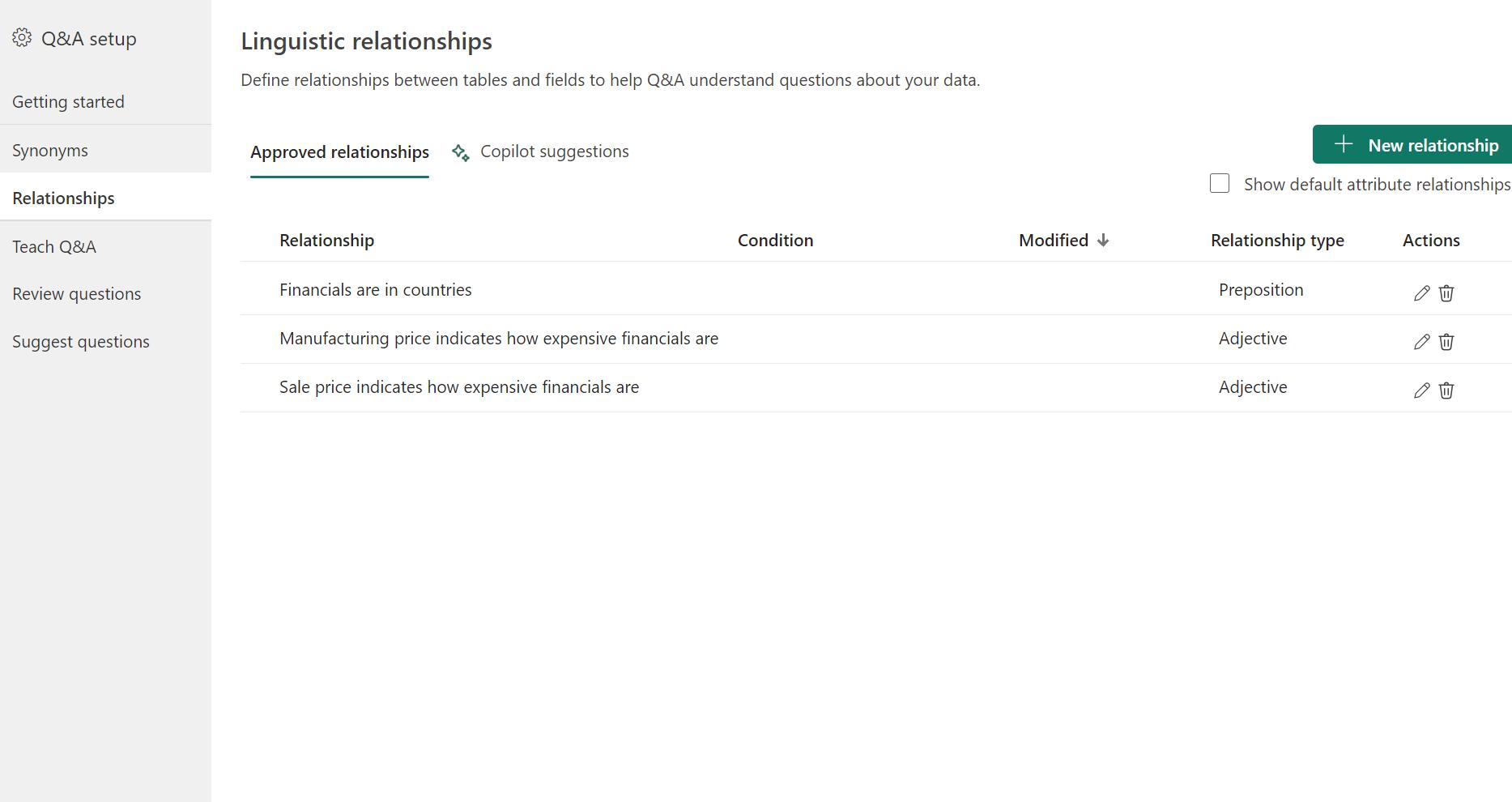
The relationships are linguistic, i.e. between words. We may remove relationships that don’t make sense for the model or edit them. We may also create a ‘+ New relationship’. We begin by selecting the relationship type:

Let’s go for a pessimistic Verb:
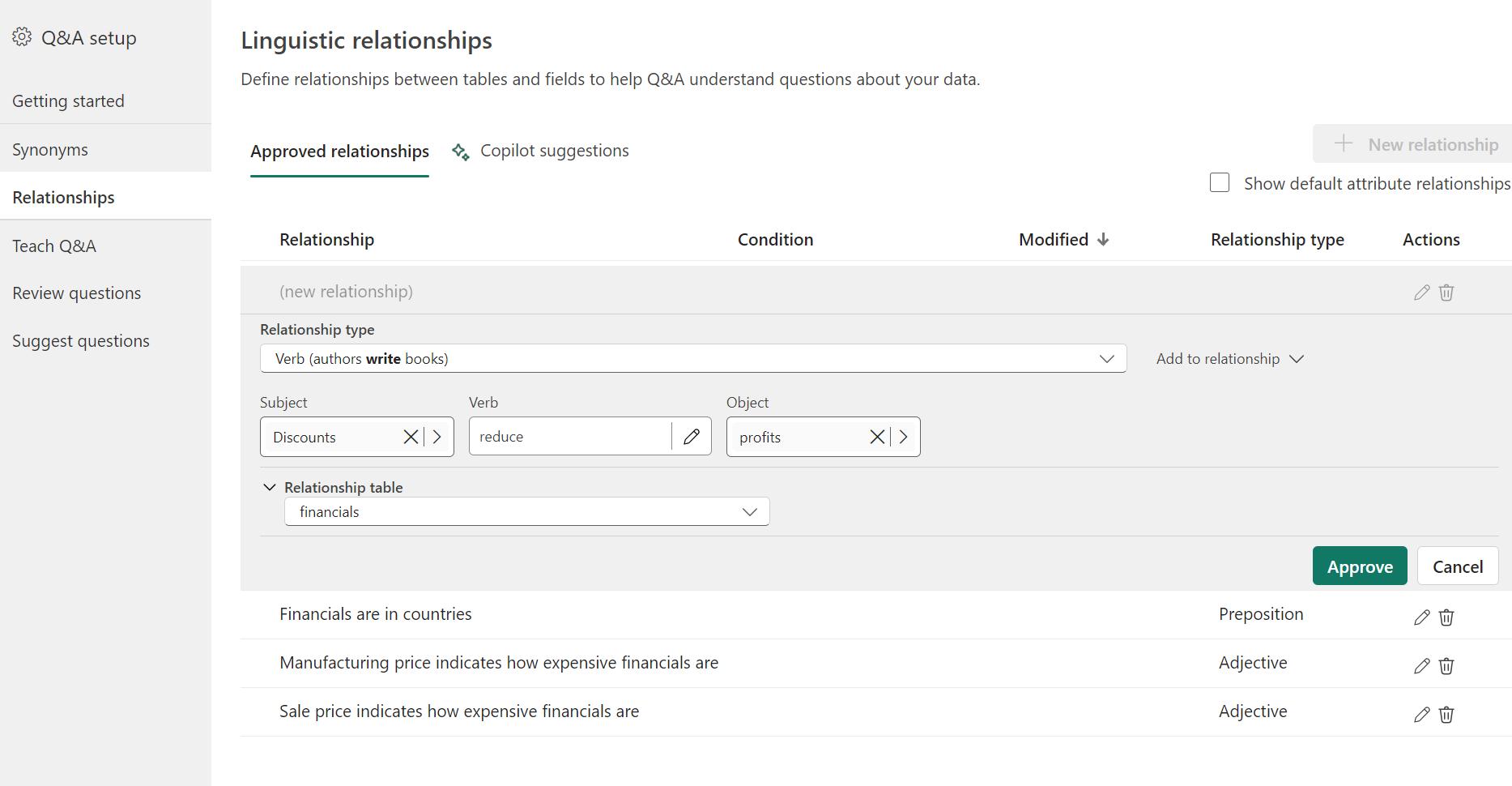
We Approve our relationship, and it appears in the list:
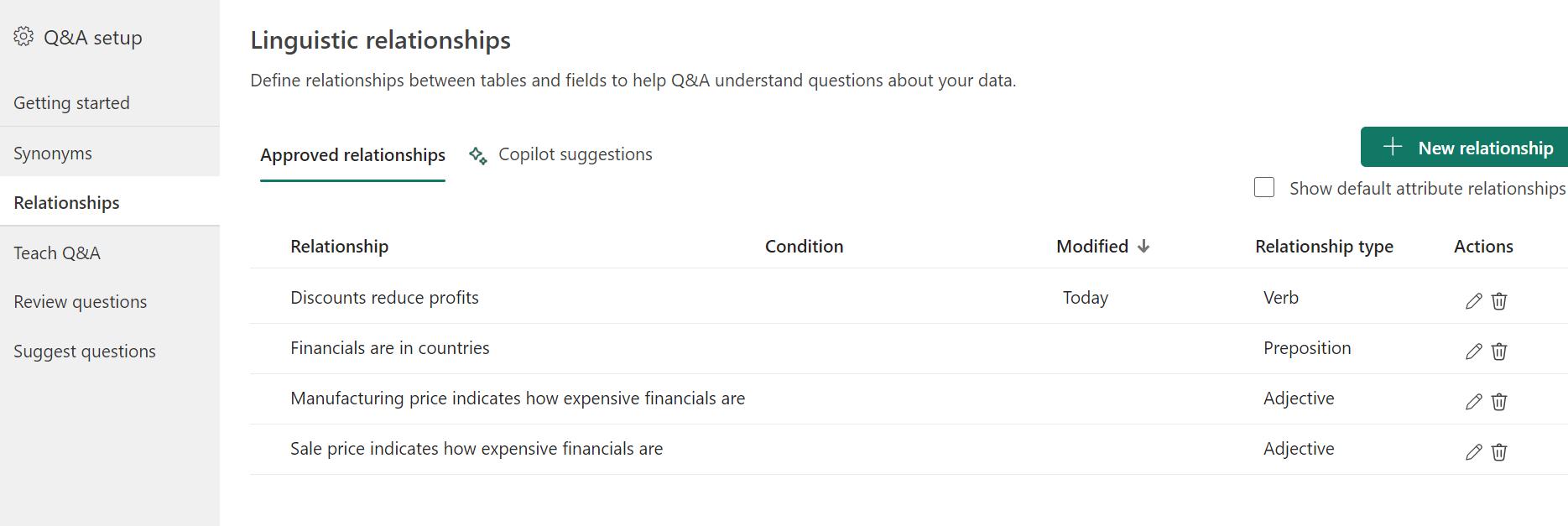
If we create a new Q&A visual, we can see how our relationship has affected the suggestions:
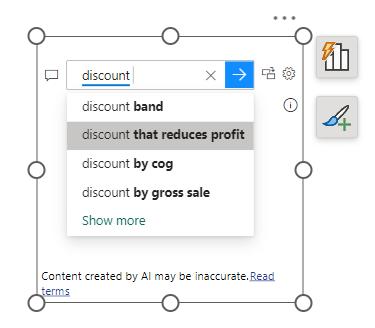
Teach Q&A
Here, we may enter questions we think users could ask and see what the answer would be:
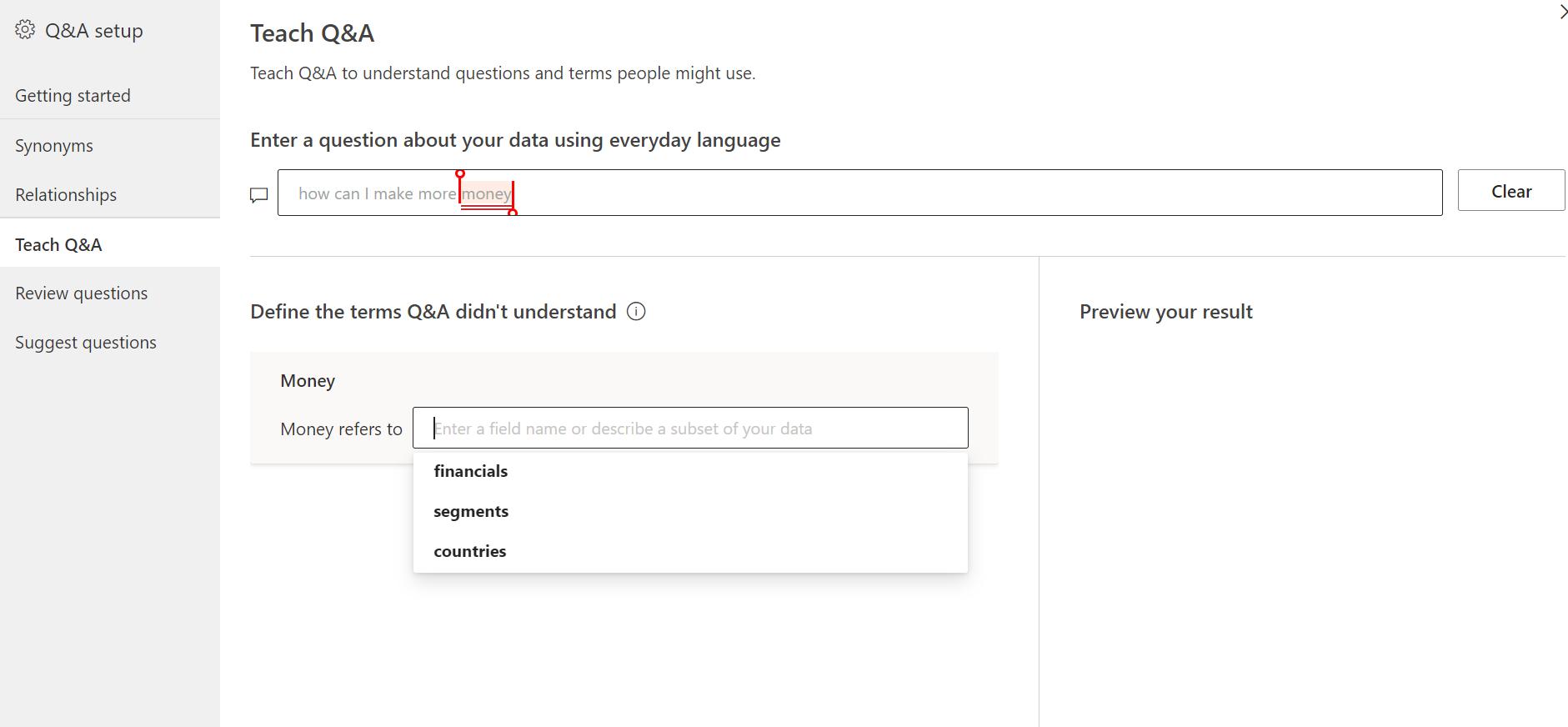
In this case, the synonym is not currently recognised and we should define ‘money’ to suit the model.
Review Questions
The description for ‘Review Questions’ is ‘Review questions people have asked and fix misunderstandings’. This noble goal is easier to achieve once the model is published, and has been accessed by other users, who are willing to help the process by providing feedback. Users may ask for synonyms to be entered to expand the natural language recognised. For example, for someone in the UK accessing US data, a ‘State’ is often referred to as a ‘County’, and a ‘Zip Code’ would be a ‘Post Code’.
Suggested Questions
To help users of our model, we may create questions that we think would help with analysis.
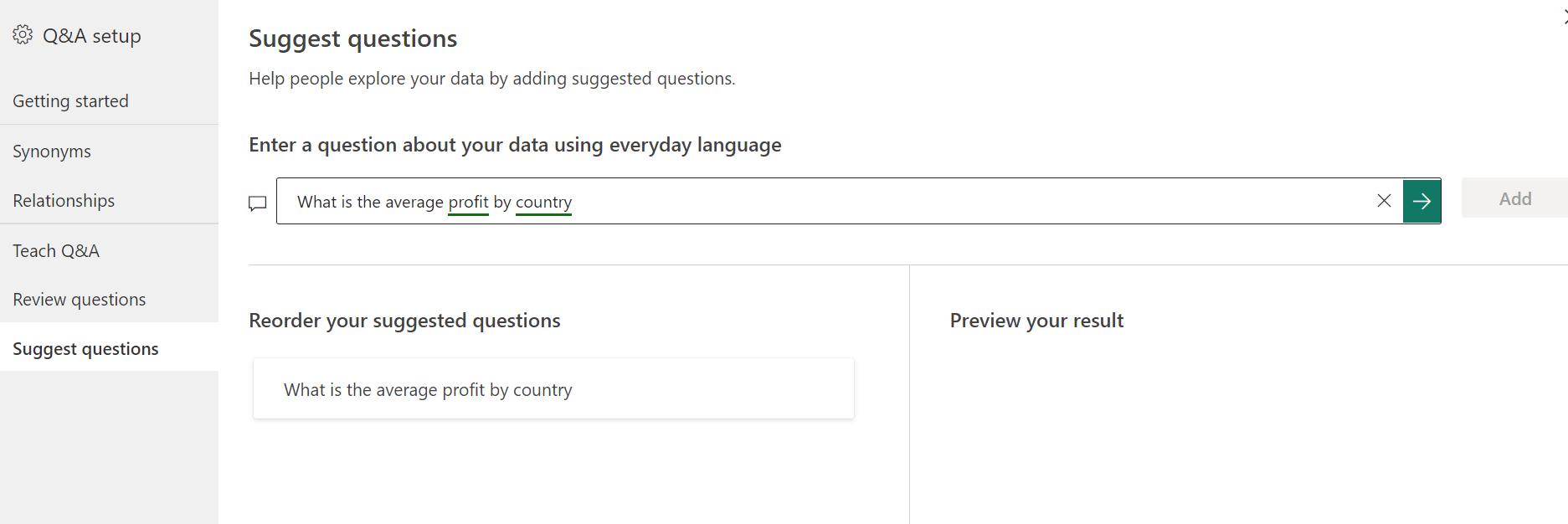
Our question appears at the top of the suggested questions:
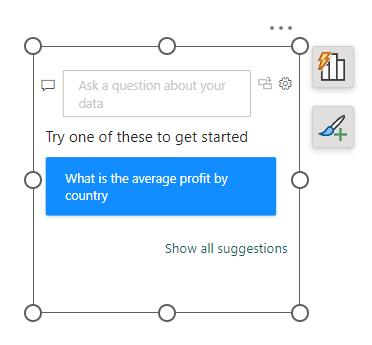
We may order our suggested questions so that the ones we expect to be used more appear first.
‘The Q&A Settings’ become more useful as a model is shared and feedback is received. Whilst Copilot is not discussed here, it too will become better with use and increased feedback. In this way, a comprehensive database of logical synonyms will make analysis with natural language more accessible to all users of Power BI.
That’s it for this week. In the meantime, please remember we offer training in Power BI which you can find out more about here. If you wish to catch up on past articles, you can find all of our past Power BI blogs here.

